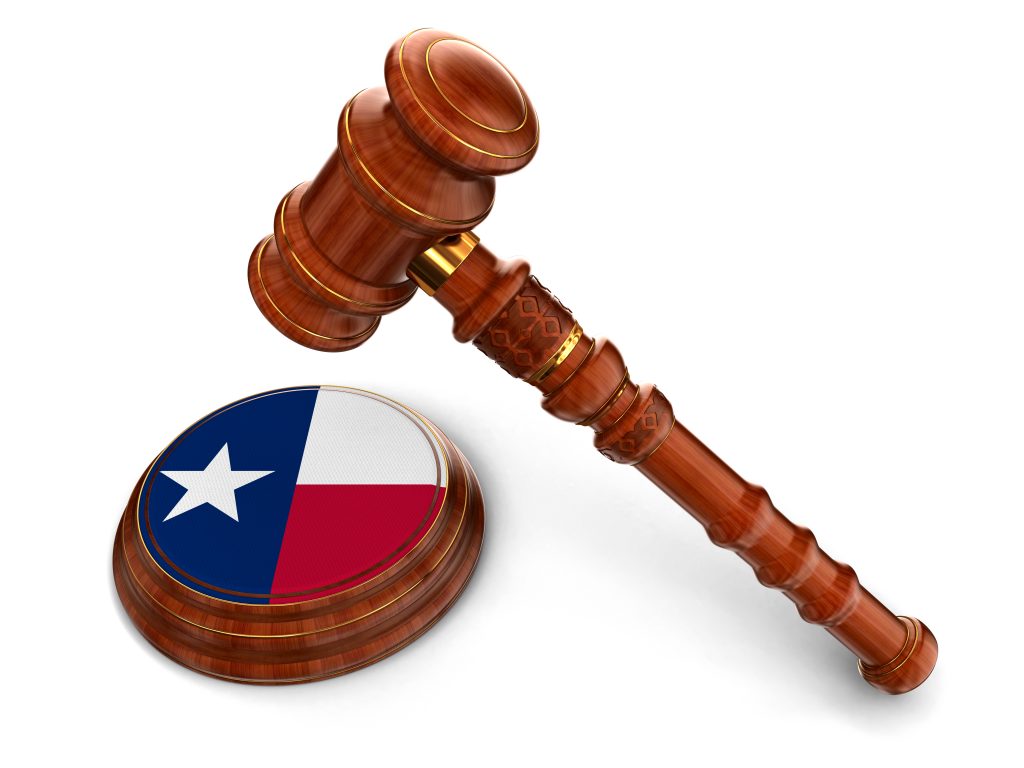“Since the Ebay decision, it has been extremely difficult for inventors to obtain preliminary injunctions. Judge Albright’s decision following a thorough consideration of all the relevant factors make me optimistic that going forward preliminary injunctions may be a viable option for independent inventors.” – Jim Carmichael, Counsel for Gonza LLC
 On December 1, Judge Alan Albright, sitting in the Waco Division of the Western District of Texas, granted a preliminary injunction (PI) to Gonza LLC, finding that all four factors of the judicial test for injunctive relief favored Gonza. IPWatchdog is told it is one of only a handful of PIs Albright has issued.
On December 1, Judge Alan Albright, sitting in the Waco Division of the Western District of Texas, granted a preliminary injunction (PI) to Gonza LLC, finding that all four factors of the judicial test for injunctive relief favored Gonza. IPWatchdog is told it is one of only a handful of PIs Albright has issued.
On July 28, 2021, Gonza LLC sued Mission Competition Fitness Equipment (MCF) in the Waco Division of the Western District of Texas. Gonza sought both injunctive relief and damages arising out of MCF’s alleged infringement of its U.S. Patent No. 11,007,405 (the ‘405 patent). Gonza asserted that it developed the subject matter of the ‘405 patent, which discloses a neck exercise device with resistance bands that can be used to improve neck capabilities, during a period of over two years. In its complaint, Gonza contended that MCF released a knock-off device that used lower quality materials, but nonetheless infringed the ‘405 patent. Gonza argued that MCF’s infringement of their ‘405 patent created a loss of goodwill, eroded the market price, and caused extreme negative consequences for Gonza’s business.
Legal Standard
At the outset of the order, Albright, citing Opulent Life Church, recognized that “injunctive relief is an extraordinary remedy which requires the movant to unequivocally show the need for its issuance.” Opulent Life Church v. City of Holly Springs, Miss., 697 F.3d 279, 288 (5th Cir. 2012). The fifth circuit utilizes a four-factor test that operates on a sliding scale to determine if a movant is entitled to a preliminary injunction. Citing Google, the court recognized that to succeed, a movant must show that: (1) they have a “substantial likelihood of success on the merits;” (2) there is a “substantial threat that failure to grant the injunction will result in irreparable injury; (3) the threatened injury to the applicant out-weighs the threatened harm to the party sought to be enjoined; and (4) granting the injunction will not disserve the public interest.” Google, Inc. v. Hood, 822 F.3d 212, 220 (5th Cir. 2016). After articulating the proper test, the court addressed each of the factors to ascertain if a preliminary injunction was proper.
Substantial Likelihood of Success
In analyzing the first factor, the court recognized that a showing of a “substantial likelihood of success” and entitlement to summary judgment are not equivalents. Instead, unlike at summary judgment, a movant seeking to prove a “substantial likelihood of success” must only present a prima facie case. Citing Trebo Mfg., the court noted that to meet this burden, a patent holder must show that “success in establishing infringement is more likely than not.” Trebo Mfg., Inc. v. Firefly Equip., LLC, 748 F.3d 1159, 1166 (Fed. Cir. 2014).
With the requisite burden in mind, the court moved to the two-step analysis required to determine if infringement occurred. The court recognized that a showing of infringement requires first that the claims be properly construed, then, that the claims be compared to the accused device or process. If, the court reasoned, every limitation of the patent at issue is either identical or substantially equivalent to the elements of the accused product or process then infringement has been established. Gonza argued that MCF clearly infringed claim 1 of the ‘405 patent. In support of their contention, Gonza provided in its brief specific analysis of each of the elements of claim 1 in table format, including pictures, captions and illustrations identifying that each of the elements of claim 1 were met by the MCF products.
MCF remained resolute in their denial of Gonza’s infringement allegations. In support of their argument, MCF first disputed that the term “a first cranial strap having each end attached to the adjustable headband” was met by their products because the Iron Neck Alpha has “one end that terminates sewn under a webbing with buckles on either side.” Therefore, MCF argued, each end of the strap is not attached to an adjustable headband. Additionally, MCF attempted to distinguish from the third limitation, which states “a second cranial strap having each end attached to the adjustable headband.” MCF said that because the accused product has one end that terminates sewn under a webbing with buckles on either side, each end of the strap is not attached to the adjustable headband. Lastly, MCF argued that its D-rings are sewn in between the headband and straps, not mounted to the adjustable headband as required by the ‘405 patent.
The court did not find MCF’s arguments persuasive and held that “it is more likely than not that the Iron Neck Alpha embodies each of the claim limitations of the ‘405 patent.” However, citing Wavetronix, the court noted that even if a likelihood of success is demonstrated, an accused infringer can defeat this factor by raising a “substantial question as to the validity of the patent in suit.” Wavetronix LLC v. Iteris, Inc., No. A-14-CA-970-SS, 2015 WL 300726, at *6 (W.D. Tex. Jan. 22, 2014). MCF argued that a substantial question of validity existed relating to the ‘405 patent because of inventorship, definiteness, and prior art issues. However, the court did not find any of these arguments persuasive and ultimately determined this factor supported the issuance of the preliminary injunction.
Irreparable Harm
The court recognized that “the central inquiry” in determining whether a harm is irreparable is whether monetary damages are sufficient to compensate the plaintiff for their injuries. Quoting Apple, the court noted that “to satisfy the irreparable harm factor in a patent infringement suit, a patentee must establish both of the following requirements: 1) that absent an injunction, it will suffer irreparable harm, and 2) that a sufficiently strong causal nexus relates the alleged harm to the alleged infringement.” Apple Inc. v. Samsung Elecs. Co., Ltd., 695 F.3d 1370, 1374 (Fed. Cir. 2012). Valid grounds for finding irreparable harm that the court gleaned from Celsis In Vitro, included “price erosin, loss of goodwill, damage to reputation, and loss of business opportunities.” Celsis In Vitro, Inc. v. CellzDirect, Inc., 664 F.3d 922, 930 (Fed. Cir. 2012).
In its brief, Gonza argued that it would suffer loss of market share, price erosion, damage in goodwill from MCF’s inferior products, entry to the market of additional infringers, and the loss of their exclusive patent rights. MCF countered that “Gonza failed to demonstrate with clarity and sufficient evidence that it will suffer irreparable harm.” However, the court declined to adopt MCF’s position, holding that Gonza carried its burden. Specifically, the court relied on the inventor’s declaration that Gonza provided which clearly stated that sales of Neck Flex had increased since its introduction into the market, until the Iron Neck Alpha was introduced.
Balance of Hardships
Next, the court turned to the issue of balancing the potential hardships that both parties could suffer depending on the outcome of the motion. MCF argued that it would be forced to restart the difficult process of product acceptance after trial, and at a competitive disadvantage, which, MCF contended, will cause them to suffer a loss in trust and confidence that would hinder future sales. In contrast, Gonza alleged that it expended substantial time and resources to develop and obtain the ‘405 patent, whereas MCF simply reverse engineered their patented product and flooded the market with an inferior product. The court concluded that this factor also weighed in favor of Gonza, noting that MCF’s proposed hardships depend upon its presumption that Gonza did not show a likelihood of success on the merits, which is contrary to the court’s findings.
Public Interest
Gonza argued that a preliminary injunction would serve the public interest because it would ensure the protection of patent rights and encourage further progress of science and useful arts. Alternatively, MCF asserted that public policy considerations favor ridding the economy of invalid patents that hamper competition and incentives to innovate. The court was persuaded to adopt Gonza’s view, noting that Gonza had already shown a likelihood of success in proving infringement, but MCF failed to raise a substantial question of patentability.
Accordingly, the court found that all four factors of the analysis favored Gonza’s request for the issuance of a preliminary injunction.
Counsel for Gonza, Jim Carmichael of Carmichael IP, noted that “since the Ebay decision, it has been extremely difficult for inventors to obtain preliminary injunctions. Judge Albright’s decision, following a thorough consideration of all the relevant factors, makes me optimistic that, going forward, preliminary injunctions may be a viable option for independent inventors.”
IPWatchdog reached out to counsel for MCF, Kirby Drake of Kirby Drake Law, for comment but had not received a response as of the time of publication.
Image Source: Deposit Photos
Image ID:34472577
Copyright:panama555

![[IPWatchdog Logo]](https://ipwatchdog.com/wp-content/themes/IPWatchdog%20-%202023/assets/images/temp/logo-small@2x.png)

![[[Advertisement]]](https://ipwatchdog.com/wp-content/uploads/2024/04/Patent-Litigation-Masters-2024-banner-early-bird-ends-Apr-21-last-chance-938x313-1.jpeg)
![[Advertisement]](https://ipwatchdog.com/wp-content/uploads/2024/04/Patent-Litigation-Masters-2024-sidebar-early-bird-ends-Apr-21-last-chance-700x500-1.jpg)

![[Advertisement]](https://ipwatchdog.com/wp-content/uploads/2021/12/WEBINAR-336-x-280-px.png)
![[Advertisement]](https://ipwatchdog.com/wp-content/uploads/2021/12/2021-Patent-Practice-on-Demand-recorded-Feb-2021-336-x-280.jpg)
![[Advertisement]](https://ipwatchdog.com/wp-content/uploads/2021/12/Ad-4-The-Invent-Patent-System™.png)







Join the Discussion
6 comments so far.
Paul F Morgan
December 8, 2021 10:35 amA preliminary injunction normally requires posting a substantial bond in case the defendant being put out of business subsequently winds on either non-infringement or invalidity. How much was it?
A major reason for the rarity of a preliminary injunction is a plausible factual dispute over claim validity. Was there none here?